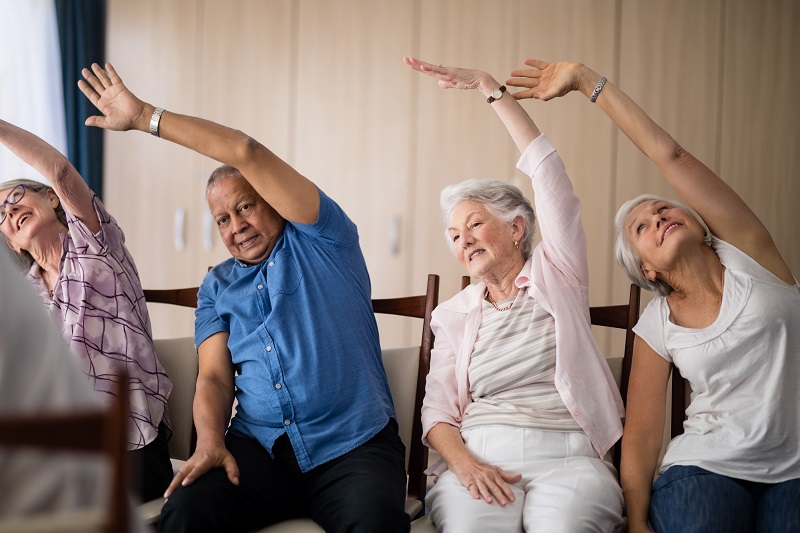Collabria Care’s Physical Therapist, Barbara Kerrigan provides tips and exercises so you can prevent falls in the home.
Part 1
Part 2
Collabria Care’s Dolores Ochoa demonstrates a series of easy exercises to promote muscle strength and tone in the home.
Part 1 – in English
Parte 1 – en español
Take the Right Steps to Prevent Falls
If you take care of your overall health, you may be able to lower your chances of falling. Most of the time falls and accidents don’t “just happen.” Here are a few tips to help you avoid falls and broken bones:
Stay Physically Active
Plan an exercise program that is right for you. Regular exercise improves muscles and makes you stronger. It also helps keep your joints, tendons, and ligaments flexible. Mild weight-bearing activities, such as walking or climbing stairs, may slow bone loss from osteoporosis.
Have Your Eyes and Hearing Tested
Even small changes in sight and hearing may cause you to fall. When you get new eyeglasses or contact lenses, take time to get used to them. Always wear your glasses or contacts when you need them If you have a hearing aid, be sure it fits well and wear it.
Medication Has Side Effects
Find out about the side effects of any medicine you take. If a drug makes you sleepy or dizzy, tell your doctor or pharmacist.
Sleep Well!
Get enough sleep. If you are sleepy, you are more likely to fall.
Limit Alcohol Consumption
Limit the amount of alcohol you drink. Even a small amount of alcohol can affect your balance and reflexes. Studies show that the rate of hip fractures in older adults increases with alcohol use.
Stand Up Slowly
Stand up slowly. Getting up too quickly can cause your blood pressure to drop. That can make you feel wobbly. Get your blood pressure checked when lying and standing.
Use a Walking Assistance Device
Use an assistive device if you need help feeling steady when you walk. Appropriate use of canes and walkers can prevent falls. If your doctor tells you to use a cane or walker, make sure it is the right size for you and the wheels roll smoothly. This is important when you’re walking in areas you don’t know well or where the walkways are uneven. A physical or occupational therapist can help you decide which devices might be helpful and teach you how to use them safely.
Avoid Wet or Icy Surfaces
Be very careful when walking on wet or icy surfaces. They can be very slippery! Try to have sand or salt spread on icy areas by your front or back door.
Wear Non-skid Footwear
Wear non-skid, rubber-soled, low-heeled shoes, or lace-up shoes with non-skid soles that fully support your feet. It is important that the soles are not too thin or too thick. Don’t walk on stairs or floors in socks or in shoes and slippers with smooth soles.
Tell Your Doctor
Always tell your doctor if you have fallen since your last checkup, even if you aren’t hurt when you fall. A fall can alert your doctor to a new medical problem or problems with your medications or eyesight that can be corrected. Your doctor may suggest physical therapy, a walking aid, or other steps to help prevent future falls.
Source: https://www.nia.nih.gov/health/prevent-falls-and-fractures

